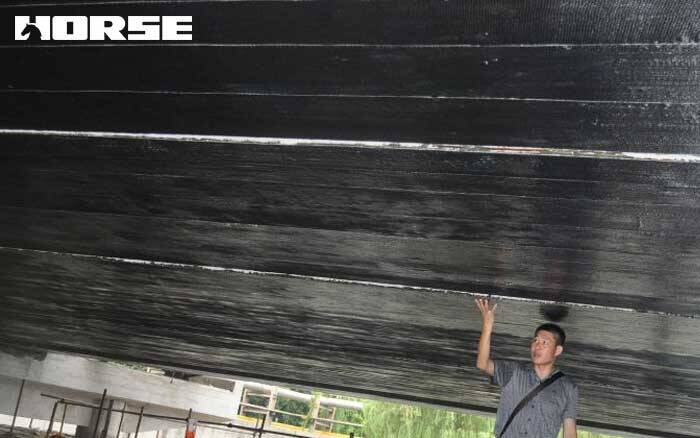Bridge Rehabilitation
Carbon Fiber Wrapping System And Crack Injection
Bridge Rehabilitation with Carbon Fiber Wrapping System And Crack Injection

A bridge is made entirely of C50 concrete. On May 6, 2008, after inspection by professionals, it was found that the prefabricated T-beam had cracks in both horizontal and vertical directions. After inspection, the main causes were as follows.
(1) The temperature in the area where the project is located varies significantly in May, and the temperature can even rise directly from 10°C to over 30°C. Due to the large temperature change, in many cases, it is too late to adjust the proportion of concrete, and the proportion parameters in winter are used, which causes serious hydration heat to cause cracking problems;
(2) The prefabrication field is set in the middle of the valley, and the wind will enter the space faster, and the water on the surface of the building structure will be evaporated, which will cause cracks due to surface tension.
Once cracks occur in the bridge structure, certain safety problems will occur, and the service life of the bridge will also be shortened.
Therefore, construction personnel need to have sufficient knowledge of the disease, and at the same time, test the structural performance.
In order to ensure that the quality of bridge engineering can meet the specified requirements, it is necessary to summarize practical and feasible reinforcement construction schemes.
The main method of reinforcement
The bridge reinforcement design plan needs to be negotiated and determined by the owner, the design unit, the supervision unit and the construction unit before it can be implemented. For the 30 m T beam with serious diseases, the reinforcement treatment is carried out. According to the specific conditions of the project, the grouting method and carbon fiber reinforcement method are selected to strengthen the entire part.
1)Crack Sealing Treatment
Unpenetrated cracks with a crack width of less than 0.10mm in the picture should be filled with epoxy resin mortar material. Main construction method: Use tools to open a "V"-shaped groove at the crack position, the top dimension is 15-20 mm, and the depth is about 20 mm.
Remove impurities from 15 to 25 mm cracks on both sides of the tank and keep them dry.
Before starting the seam sealing, it is necessary to brush the epoxy resin solution with a thickness of 1-2 mm on the "V"-shaped groove surface to ensure the uniformity of the surface, and there should be no wrinkles and bubbles.
Choose to use epoxy resin solution to seal the cracks
2) Pressure grouting method
For crack widths exceeding 0. 10 mm or if a through crack is formed, the pressure grouting method needs to be applied to fill the crack position.
3) Paste carbon fiber
According to the specific requirements of the project, carbon fiber cloth with a thickness of 300 g/m2 and a thickness of 0.167mm is selected as the reinforced fiber material to ensure that its technical parameters can meet the requirements. Structural adhesives should select products that meet the requirements of carbon fiber materials, meet the requirements of national standards, and have quality certification documents for materials to ensure that the quality of materials meets the standards.
If the crack has been extended to the position of the horseshoe or flange, the length and width of the carbon fiber should be appropriately extended according to the specific situation. The carbon fiber material applied in the position can be appropriately reduced by 15 cm.
During construction, try to keep carbon fiber materials staggered, and try to avoid obstacles when pasting.